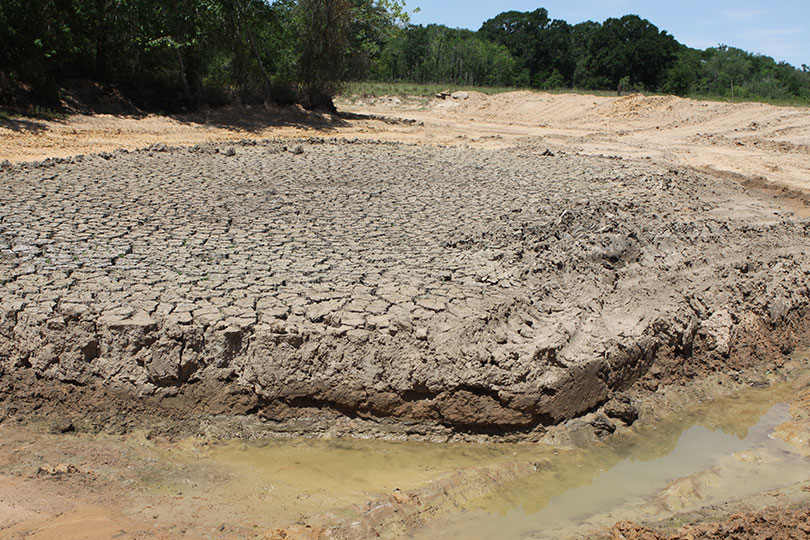The ongoing drought across much of Texas prompted Governor Greg Abbott to announce a disaster declaration for 189 counties.
The counties included as of July 20 are:
| Anderson Andrews Aransas Armstrong Atascosa Austin Bailey Bandera Baylor Bee Bell Bexar Blanco Borden Bosque Brazoria Brewster Briscoe Brown Burnet Caldwell Calhoun Callahan Cameron Camp Carson Castro Chambers Childress Cochran Coke Coleman Collingsworth Colorado Comal Comanche Concho Coryell Cottle Crane Crosby Culberson Dallas Dallam Dawson Deaf Smith DeWitt Dickens Dimmit Donley Duval Eastland Ector Edwards Ellis Erath Falls Fisher Floyd Foard Fort Bend Franklin Freestone |
Frio Gaines Galveston Garza Gillespie Glasscock Goliad Gonzales Gregg Guadalupe Hale Hall Hamilton Hansford Hardeman Harris Hartley Haskell Hays Henderson Hidalgo Hill Hockley Hood Howard Hudspeth Hutchinson Irion Jackson Jeff Davis Jefferson Johnson Jones Karnes Kaufman Kendall Kent Kerr Kimble King Kinney Knox La Salle Lamar Lamb Lampasas Lavaca Limestone Live Oak Llano Loving Lubbock Lynn Martin Mason Matagorda Maverick McCulloch McLennan McMullen Medina Menard Midland |
Mills Mitchell Moore Motley Navarro Nolan Nueces Ochiltree Oldham Orange Parker Parmer Pecos Potter Presidio Rains Randall Reagan Real Reeves Refugio Roberts Rockwall Runnels San Patricio San Saba Schleicher Scurry Shackelford Sherman Somervell Starr Stephens Sterling Stonewall Sutton Swisher Tarra Taylor Terrell Terry Tom Green Travis Upshur Upton Uvalde Val Verde Van Zandt Victoria Walker Waller Ward Webb Wharton Wichita Wilbarger Williamson Wilson Winkler Wood Yoakum Zapata Zavala |
Counties included in the drought declaration are determined by recommendations from the Drought Preparedness Council, which includes representatives from the Texas Division of Emergency Management, Texas Water Development Board, Texas Commission on Environmental Quality, Texas State Soil and Water Conservation Board, Texas Department of Agriculture, Texas Parks and Wildlife Department, Texas A&M AgriLife Extension, Texas A&M Forest Service, Texas Department of Transportation, Department of State Health Services, ERCOT, Texas Economic Development and Tourism Office, Public Utility Commission and the state climatologist.
The declaration gives assurance to landowners that they will not be penalized for managing their agricultural lands during drought conditions. Farmers and ranchers who need to remove livestock or cannot harvest a crop because of the prolonged drought conditions can maintain agricultural valuation until conditions allow for normal production once again.
“If a drought declaration has been issued, then the Texas Tax Code doesn’t require farmers and ranchers to meet the ‘degree of intensity’ to maintain agricultural valuation of the land,” Billy Howe, Texas Farm Bureau associate director of Government Affairs, said.
Significantly low rainfall and prolonged dry conditions also continue to increase the threat of wildfire across these counties.
To view the counties in a burn ban, visit https://tfsweb.tamu.edu/Burnbans.


You have forgotten about PALO PINTO COUNTY !! HELP😩😩😩😩😩
Palo Pinto was not on the disaster declaration list provided by Gov. Abbott.
Cannot believe that Houston County is not on the list.
Or Anderson County. Both are bone dry.
Are you missing Menard County?
Menard was not on the disaster declaration list provided by Gov. Abbott.
Stop wasting water on nonessentials like golf courses and baseball fields. We need that water to grow food!
Yes you are right Menard County is surrounded by a drought for about 200 m i l e radius or more.
Bastrop and Lee county are both bone dry
Corey
You are certainly correct. A real agriculture crisis is in Bastrop and Lee County.
What about Rusk County. We are still putting out hay for our cows to eat now!!
Why isn’t Jim Wells County on the list?
What about Leon county? I can’t believe this!
Hunt and rains county need to be on the list also
Yes! I live in north east hunt county and we are so dry. We have just one pond out of six with water for our cattle
Bastrop & Lee counties need help.
Please Add Bastrop
Menard County and Anderson county are on the list
Why is Washington County not considered for the list?
Why in the world is San Saba County not on the list.
Does the county judge have to request the declaration? You may want to contact them and ask.
How do we request a county to be added by the governor? Grimes county needs to be added.
Madison County has missed about every single pop up thunderstorm while Walker county has picked up quite a few storms in the past two weeks, yet Walker county is on the list? Makes no sense….
Hunt county is in a severe drought.
Add Titis county I’ve been hating since mid June
Bowie County !!!!!!!!!!!!!! Hello! Been feeding hay for a month!!!